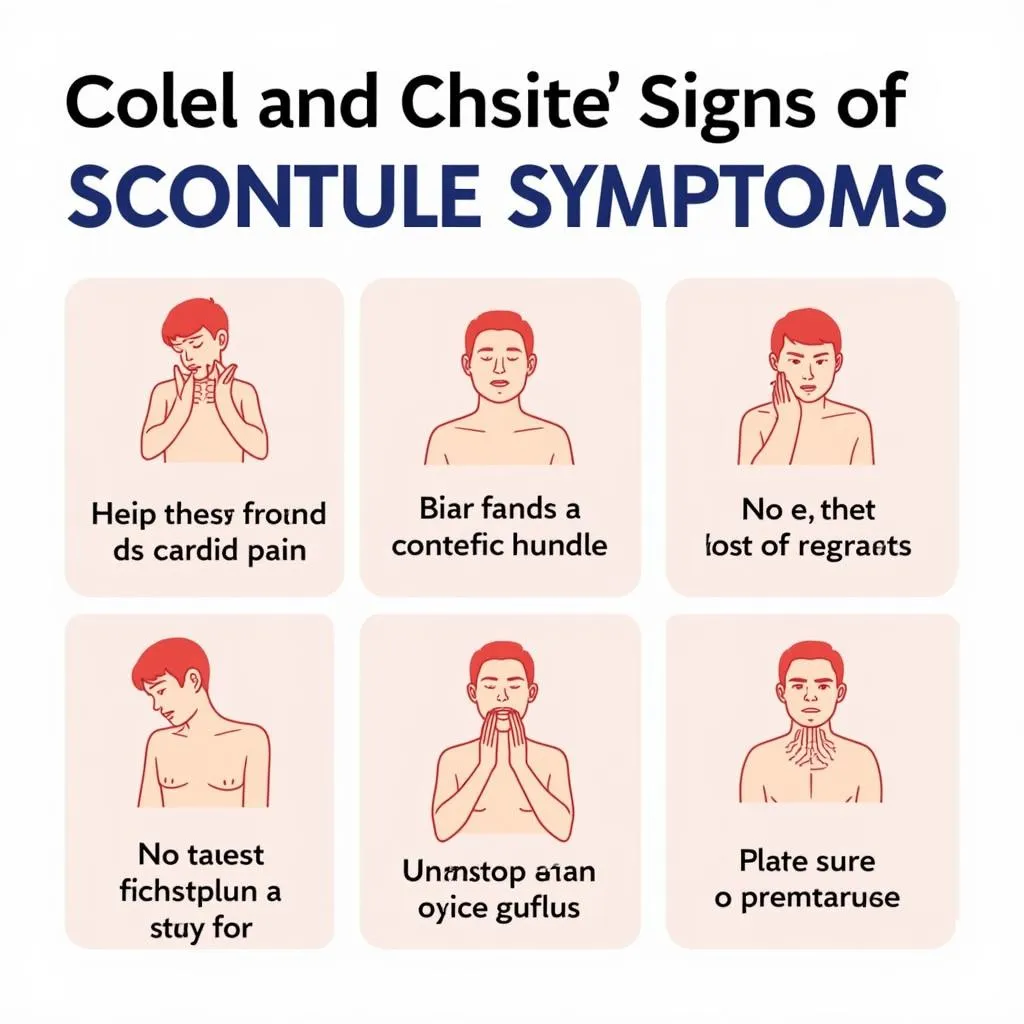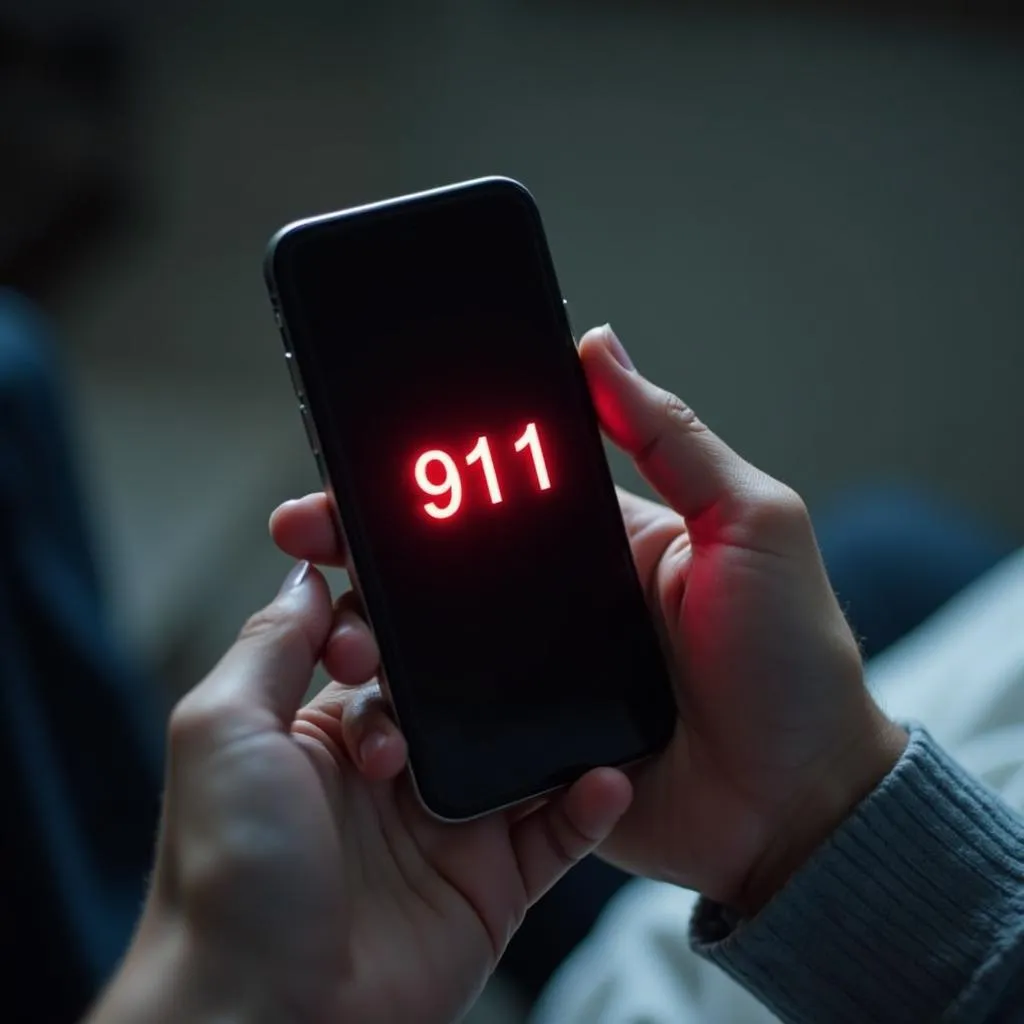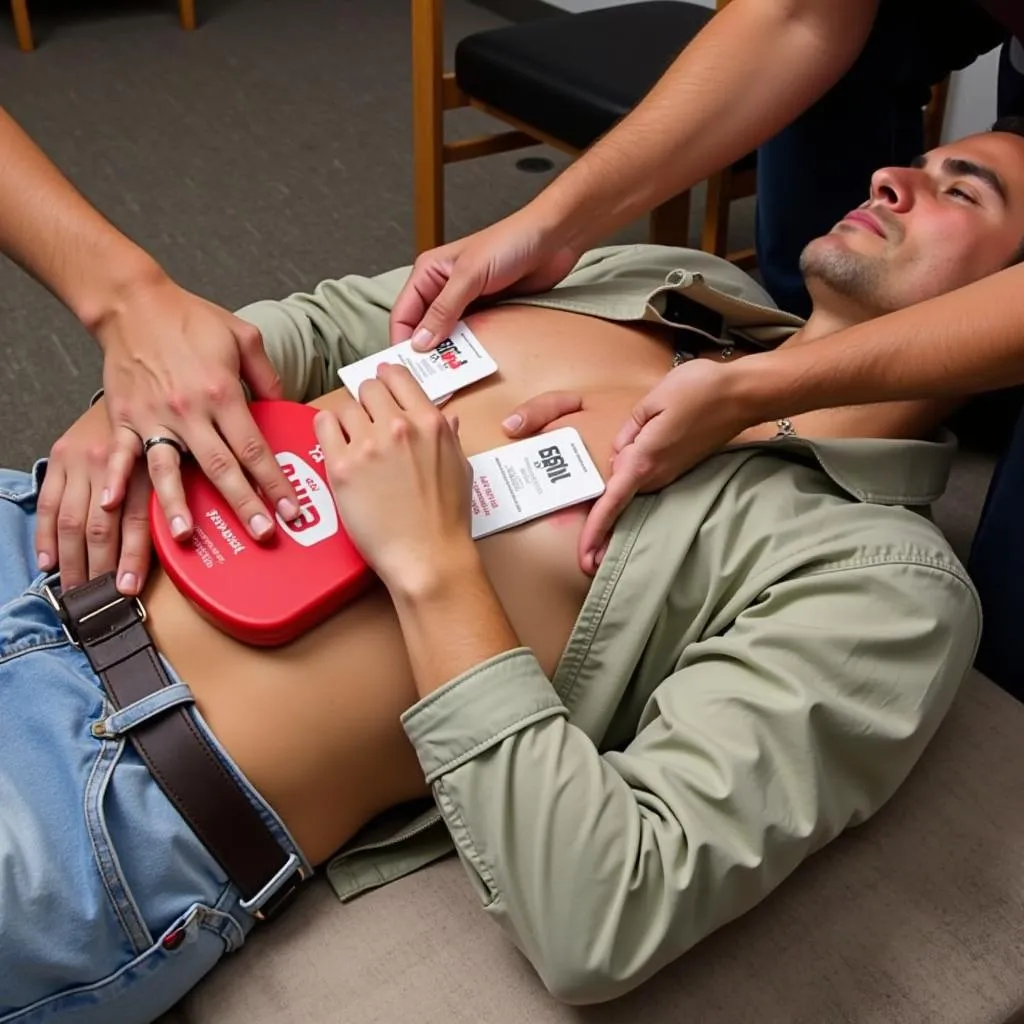Every second counts in an emergency. When someone experiences sudden cardiac arrest, their chances of survival decrease with each passing minute. The “out-of-hospital chain of survival” is a series of critical actions that, when performed quickly and effectively, can dramatically increase the likelihood of survival and positive outcomes. As a bystander, you can play a vital role – you are the first link in this life-saving chain.
Recognizing the Emergency: When Seconds Matter
 Recognizing Cardiac Arrest Symptoms
Recognizing Cardiac Arrest Symptoms
Knowing how to recognize cardiac arrest is the crucial first step. Unlike a heart attack, where blood flow is restricted, cardiac arrest involves the heart completely stopping. Look for these signs:
- Sudden loss of responsiveness: The person won’t wake up or respond to touch or sound.
- No breathing or only gasping: Normal breathing ceases.
- No pulse: Check for a pulse on the side of the neck (carotid artery).
Cardiac arrest is a medical emergency requiring immediate action.
Activating Emergency Medical Services: The Call for Help
 Activating EMS: Making the Call
Activating EMS: Making the Call
As soon as you recognize the signs of cardiac arrest, don’t hesitate:
- Call 911 (or your local emergency number) immediately.
- Speak clearly and calmly. Provide your exact location and describe the situation.
- Don’t hang up until the dispatcher instructs you to do so. They may have life-saving instructions.
Early activation of EMS gives the victim the best chance of survival.
CPR: Your Hands Can Make a Difference
 Performing CPR: Chest Compressions
Performing CPR: Chest Compressions
While waiting for EMS to arrive, your actions can be the difference between life and death. Cardiopulmonary Resuscitation (CPR) helps circulate oxygenated blood to the brain and other vital organs.
- If you are trained in CPR, begin immediately.
- If you are not trained, most emergency dispatchers can guide you through the process over the phone.
Don’t be afraid to act – even hands-only CPR can significantly improve chances of survival.
Early Defibrillation: A Shock to the System
 Using an AED in an Emergency
Using an AED in an Emergency
An Automated External Defibrillator (AED) is a portable device that can deliver an electric shock to the heart, potentially restoring a normal rhythm.
- Many public places have AEDs readily available. Look for signs or ask someone nearby.
- AEDs are designed for use by the public, even without formal training. The device provides clear voice instructions.
Time is of the essence. For each minute that passes without defibrillation, the chances of survival decrease by about 10%.
The Importance of Being Prepared: Knowledge Saves Lives
Being the first link in the out-of-hospital chain of survival is a responsibility we all share. By understanding the steps and acting quickly, you can contribute to saving a life.
- Learn CPR and how to use an AED. Numerous organizations offer training courses.
- Be aware of AED locations in your community and workplace. Familiarize yourself with their use.
Your willingness to act could be the reason someone survives cardiac arrest.
FAQ
What is the difference between cardiac arrest and a heart attack?
Cardiac arrest is an “electrical” problem where the heart suddenly stops beating, while a heart attack is a “circulation” problem where blood flow to the heart is blocked.
How long should I perform CPR before help arrives?
Continue CPR until EMS arrives, you become too exhausted to continue, or an AED becomes available.
What if I make a mistake while performing CPR?
Doing something is always better than doing nothing. The most important thing is to start chest compressions as quickly as possible.
Where can I find hospital beds rentals near me?
For information about hospital bed rentals, you can find resources online or contact your local medical supply companies.
What if I don’t feel comfortable performing CPR?
Even calling 911 and providing information is a crucial step in the chain of survival.
Conclusion
The first link in the out-of-hospital chain of survival is vital. By recognizing cardiac arrest, activating EMS, performing CPR, and using an AED when available, you can make a life-saving difference.
Remember, every second counts. Empower yourself with knowledge and be prepared to act. You could be the reason someone gets a second chance at life.
Need immediate assistance? Contact us:
Phone: 02437655121
Email: [email protected]
Address: Số 298 Đ. Cầu Diễn, Minh Khai, Bắc Từ Liêm, Hà Nội, Việt Nam.
Our dedicated team is available 24/7 to assist you.